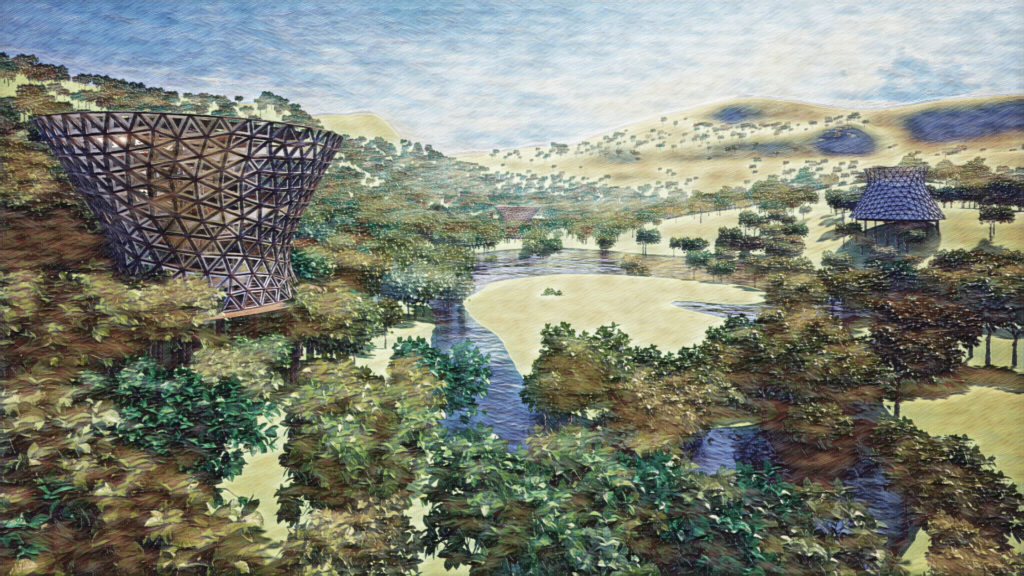Drawing inspiration from our site’s location in Pozzuoli, Naples, Italy, our concept revolves around crafting a continuous journey that symbolizes history through the exhibition spaces. This approach fosters a symbiotic relationship with the surrounding context, effectively erasing the boundaries between the interior and exterior environments by bringing nature into the space.
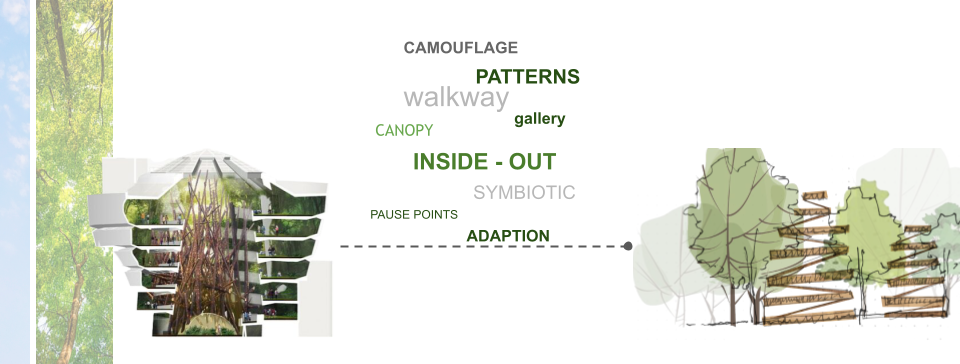
Our computational methodology can be split into three distinct phases: first, identifying structures through tree clusters; next, abstracting the form to align with these clusters; and finally, generating the architectural form through manipulation of the skin.

Locating Tree Clusters – our starting point is the lake, which serves as our reference to establish a maximum search radius, defining our desired proximity. Within this boundary, we implement a search grid. We eliminate grid members in conflict with the lake and then assess the remaining grid for the number of trees within. This process yields potential sites for our three typologies. Site can then be selected in accordance with user needs.
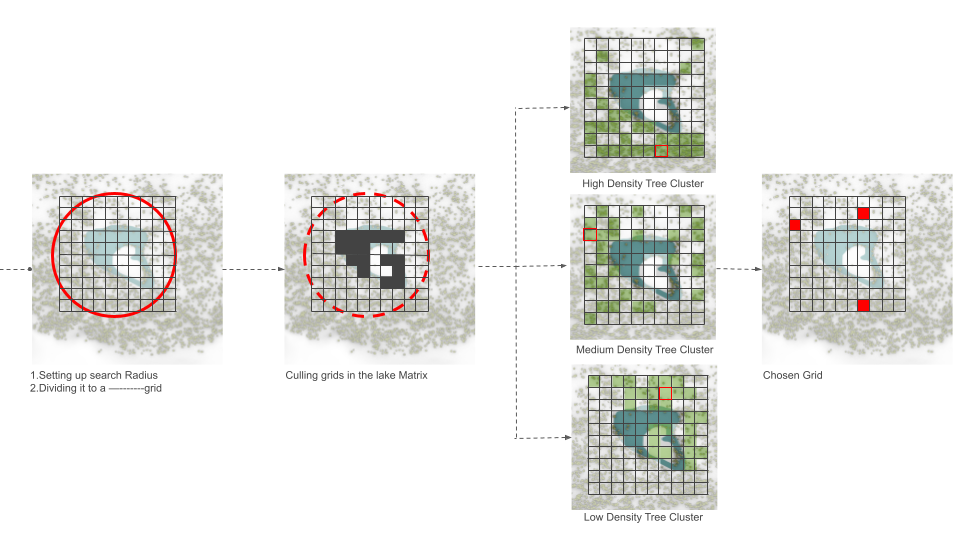
Abstracting Form – We explored various form generation techniques, ranging from mathematical equations to the manipulation of geometry. After careful consideration, we opted to pursue the latter, as it led to a more robust and effective solution.

The parameters were adjusted to align with their corresponding grid, and then the form was applied. As evident, the design solution demonstrates its capability to adapt seamlessly to alterations in topography, solar geometry, and orientation.
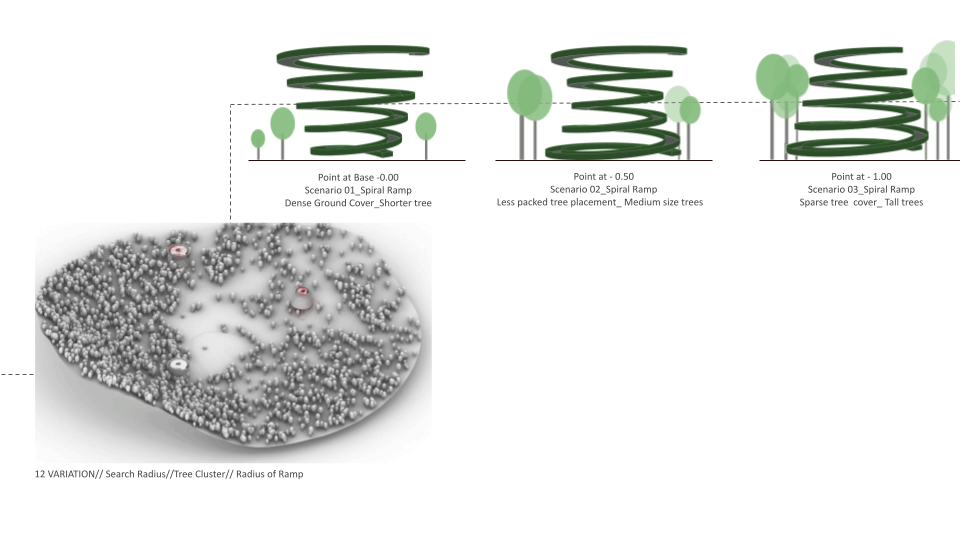
Meshing and Geometry – Utilizing input parameters, a form is generated and subsequently subdivided to create an external skin. The entrance is strategically shaped in relation to the terrain, while the apertures in the skin are designed to respond effectively to the most challenging solar positions.
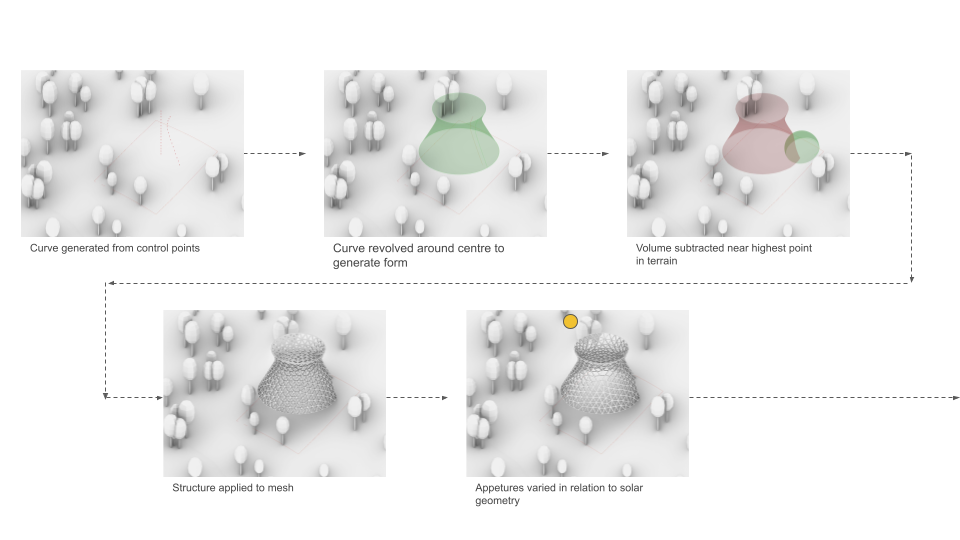
Following the generation of the base geometry, a structure is developed through the extraction of the base geometry, subdividing it into a lattice. Columns are extended downward by extracting topographical differences. To facilitate accessibility, a modular stair system is then extended to connect with the top of the ramp – this provides and exit meaning visitors do not have to double back on themselves once the experience is over. On reflection, with more time the project would look to blend the geometry of the structure with the project more closely and aim to create a cohesive aesthetic and architectural language.
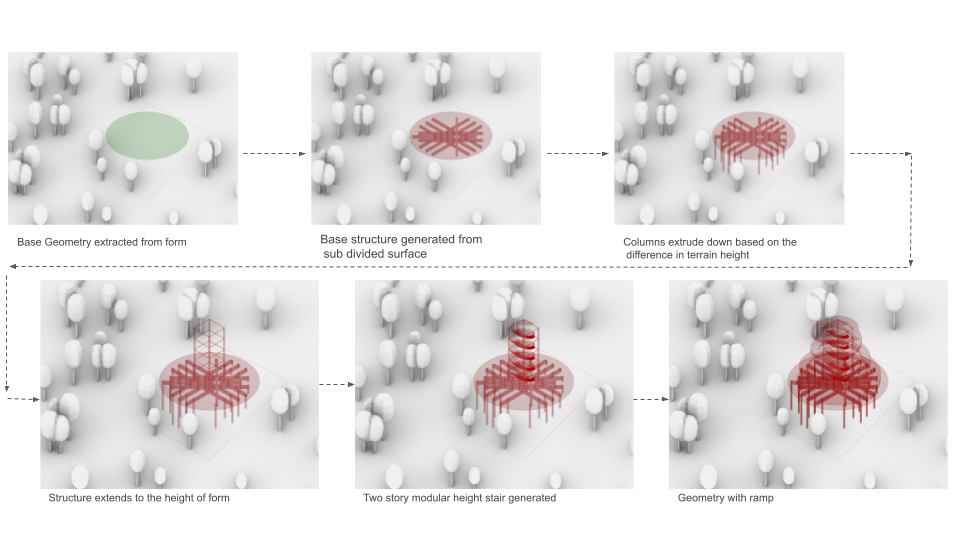
A sectional view highlights the contextual relationship, with the cafe positioned at the top to offer a destination boasting panoramic views. Preceding the cafe, a ramp unfolds, creating a continuous exhibition space. Meanwhile, the visitor’s center is strategically situated at the ground plane for optimal accessibility.
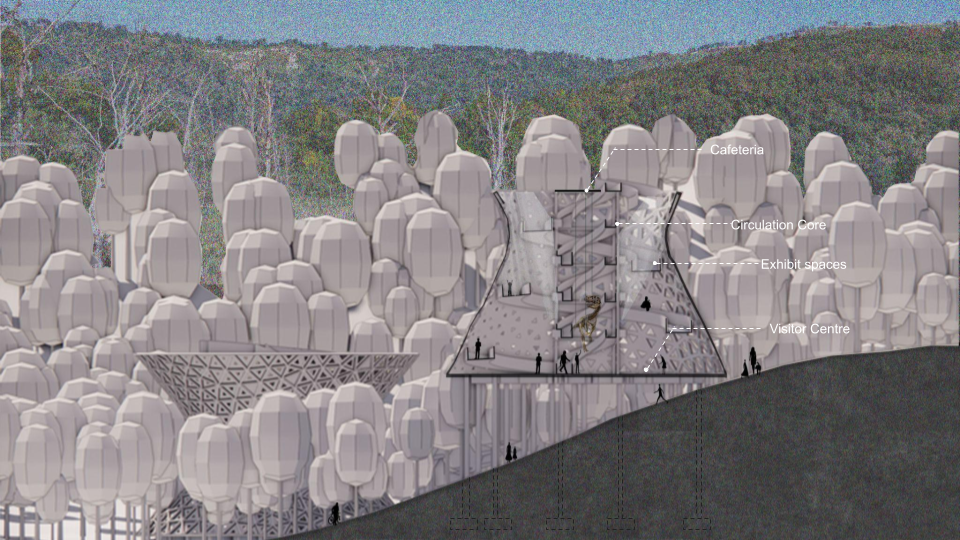
The plan view shows the relationship of the structures to each other and to the context.
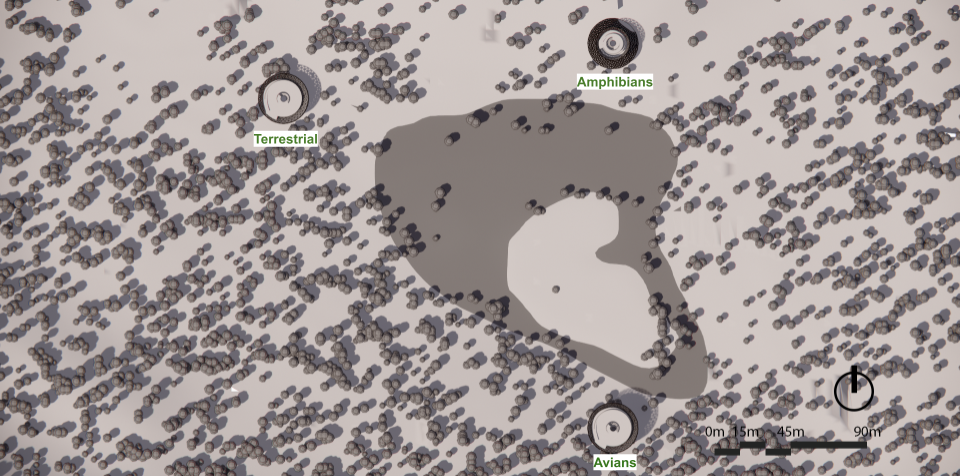
Internal Shot.

External Shot.
